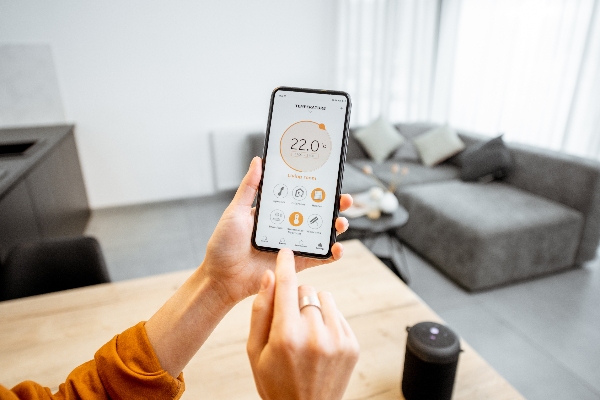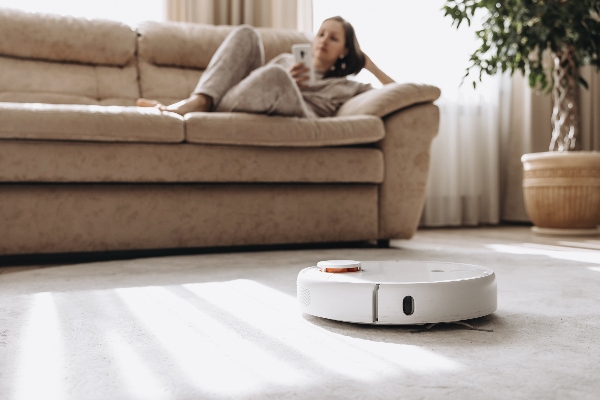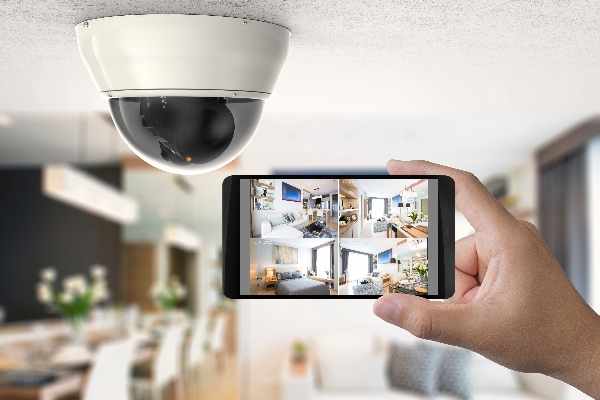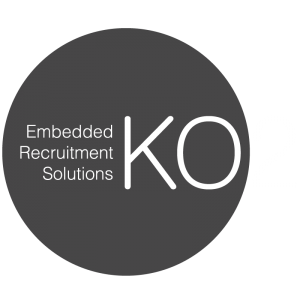One of the topics that is regularly brought up surrounding IoT devices and technology is the issue of security. A range of different standards have been brought in to control and improve this, and one of these which is getting a lot of attention at the moment is the Matter protocol.
Matter is a standard for smart home technology that has been framed as a potentially transformative development for both customers and manufacturers. It stands to act as a way of integrating a wide range of devices no matter their brand, allowing total control and synchronisation of technology that uses the Internet of Things in our homes.
Whilst Matter is still in its relatively early stages, it has been adopted by some huge brands in the smart home technology industry and made a very positive impact with what it can do. If you’re an engineer or developer working with IoT technology for consumers then you may likely have already heard of Matter, or even have started to integrate it into your work already.
In this article, we explain what Matter is, what the advantages of this protocol are, what kinds of devices it is compatible with, and what engineers need to know about Matter.
What is the Matter Standard?
Matter is a standard for smart home technology that aims to simplify and standardise the different devices so that they can all communicate, no matter their brand or model. It was developed by the Connectivity Standards Alliance (CSA) which is an organisation that aims to support the development of IoT technologies through standardisation.
This isn’t a new system for smart house technology, but a protocol that runs over existing protocols like Threads and Wifi, using Bluetooth Low Energy when you’re setting a new device up. Matter is also an open-source, royalty-free standard, making it accessible to a wide audience.
Matter began development around 2020 and the first version of the protocol was launched at the end of 2022 for devices like smart plugs, lightbulbs and sensors. In May 2023, Matter 1.1 was released to mainly fix bugs in the standard, and in October 2023 the release of Matter 1.2 added nine new device types to the standard, including robot vacuums, fridges and smoke alarms.
What makes Matter different from previous standards and initiatives is that it was developed by many of the big names in IoT home devices, including Apple, Google and Amazon. This means that the standard has been very successful in being rolled out because it has been integrated into products like Amazon Alexa, Apple Home and Google Home, which were already widely used.
By using Matter, home automation becomes a lot easier for users because their devices can all communicate and work more efficiently together, regardless of their brand. You also don’t need an internet connection for your devices to work together, as they can all be controlled locally instead once they are connected.

The Advantages of Matter
One of the main advantages of the Matter protocol is that it has been widely adopted by over 550 tech companies, including some of the biggest names in the industry. This means that many of the most popular smart home devices have adopted the standard, which not only increases its usage but also acts as greater encouragement for other brands to get on board.
The versatility of Matter links to this advantage, but is an advantage in itself because it applies to a range of different devices, regardless of their manufacturer. This makes it easy for consumers to set up and use their own group of smart home devices without having to buy products which are all from the same brand, allowing for greater customisation and ensuring high safety and quality no matter the product.
One of the key features and purposes of Matter is that it improves the overall security of IoT home devices, which is an advantage for everyone. Customers have less to worry about regarding the security of their devices, and developers will have fewer security-related issues to solve during and after the development process.
Having a standardised safety protocol for a lot of common smart home devices means that customer support can be centralised, which benefits all of the brands involved. Not only does the Matter protocol reduce issues with set-up, connectivity and compatibility, causing fewer issues for customers, but it also means that it’s easier for customer support employees to solve issues because of the common, underlying protocol.
From a consumer perspective, an advantage of the standard is that it makes the setup process of Matter enable devices much more straightforward. As long as devices are all connected to a home network and you have an app as an admin point, all products can be viewed and controlled through a simplified system.
From a design and manufacturing point of view, the Matter protocol makes it much faster and easier to ensure compatibility with other devices. This process would previously have been very long and costly, requiring a range of certifications. With Matter, engineers just need to make sure that their devices are aligned with this standard and they’ll be able to work in parallel with all others that are also set up for Matter home automation.
Another benefit of the Matter for smart home standard is that using it can help to lower development costs for products, which is a significant advantage for manufacturers. This is because having a shared security and connectivity standard makes it possible for infrastructure components like open-source drivers and libraries to also be shared between companies and developers, reducing the need for some engineering tasks. App development can also be reduced because of common service discovery and device-setup mechanisms, which again lowers development costs and in turn, leads to more affordable products for consumers.

What are Matter Compatible Devices?
The release of Matter 1.2 expanded the number of compatible smart home devices that the standard applied to. The current categories of devices supported by the Matter standard are:
- Plugs and outlets
- Light bulbs
- Light switches
- Sensors
- Locks
- Garage door controllers
- Thermostats
- Blinds
- Media devices
- HVAC controllers
- Smoke and CO2 detectors
- Robot vacuum cleaners
- Fans
- Fridges
- Air purifiers and quality sensors
- Dishwashers
- Washing machines
The CSA plans to release two new updates to the standard each year, with categories like EV charging, security cameras and energy management devices next in line as devices to be integrated with the protocol.
As an engineer, understanding the types of devices that are compatible with Matter is important, as this is a widespread security standard that will likely inform your work. Whilst a lot of the news and content surrounding Matter and its release focuses on how well-known brands like Apple, Google and Amazon are creating Matter-compatible devices, plenty of smaller companies are following suit. If you’re involved in the production of IoT home devices, this is likely a protocol you will need to get to grips with.

What Engineers Should Know About Matter
Whether you’re already developing devices that are compliant with the Matter protocol or you’re considering how you can get your work to integrate with it, there are a range of technical details and ideas that can be valuable for engineers to understand.
Firstly, as an engineer you will need to know the basics of Matter’s data model. The main components involved are Nodes, Endpoints, Clusters, Attributes, Commands and Events. The majority of interactions in Matter happen between Nodes, and the Endpoints that these contain are what give Matter its built-in DFU/OTA.
From a security perspective, Matter encrypts and decrypts device communication using a range of different methods. When the controller and device are going through the commissioning process they share a set of key pairs called a Fabric to facilitate secure communication. Whenever a new device is commissioned by a controller it is added to the fabric and made secure.
Moving on to more practical considerations for engineers working with Matter, a range of different hardware from a variety of brands runs Matter, which is great if you have a particular chip or development kit you like to work with. As Matter’s popularity grows, more manufacturers are likely to create hardware that is compatible with the Matter protocol, so from a design perspective you have plenty of options when choosing where to get your hardware from.
If you work with technologies like Zigbee, BLE, Bluetooth Mesh, and Z-Wave it’s possible to operate these devices like they were a Matter device. You can do this by using a specific bridge device or by simultaneously running your current device and Matter stack. This means that, even if you’re not producing devices that run on Matter, you can adapt the code by integrating the protocol and bridge the two networks together.
When you create a matter-supported device, you need to integrate open-source protocol code into the code that makes the device run. If you’re new to open-source software development then this may be challenging, so you’ll need to be prepared to deal with this specific feature of Matter devices.
Finally, be aware that your device must support one of either Bluetooth, Wifi, Ethernet or a radio running Thread through IEEE 802.11.15.4. Devices which can only support Bluetooth and not also run the Thread stack will not work with Matter.

Summary
The current discussion around Matter and Matter-enabled devices is overwhelmingly positive. Many developers, manufacturers and consumers view it as the future of smart home technology, and its potential to connect all kinds of devices regardless of their brand and improve customer experience is certainly promising.
The protocol is still in its relatively early stages however, and whilst many categories of smart home technology are now supported by Matter, more complex devices are yet to be aligned. It’s certainly an exciting prospect for engineers working in consumer IoT technology and will impact various areas of work, so it’s worth keeping up to date with the latest Matter developments in order to stay informed.
If you’re an engineer looking for job opportunities to work with protocols like Matter, we’re a specialist electronic embedded systems recruitment agency that can help. Take a look at our current IoT job opportunities or get in touch to speak to the team about the kind of role you’re looking for.






